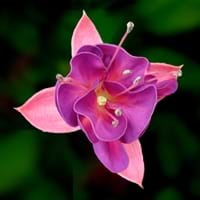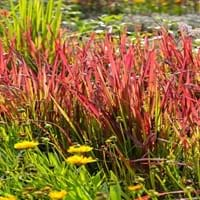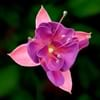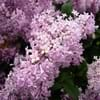Life Span
Perennial
Perennial
Type
Tender Perennial
Grass
Types
Fuchsia Decidua, Fuchsia Fulgens, Fuchsia Splendens, Fuchsia Microphylla
Not Available
Number of Varieties
Not Available
Habitat
Forest edges, Woods
Moist Soils, River side, yards
USDA Hardiness Zone
9-10
5-9
Sunset Zone
16, 17, 23, 24
2b, 3a, 3b, 4, 5, 6, 7, 8, 9, 10, 11, 12, 13, 14, 15, 16, 17, 18, 19, 20, 21, 22, 23, 24
Habit
Arching/Fountain-shaped
Upright/Erect
Flower Color
Orange Red
Not Available
Flower Color Modifier
Not Available
Bicolor
Fruit Color
Not Available
Non Fruiting Plant
Leaf Color in Spring
Purple, Dark Green
Light Green
Leaf Color in Summer
Purple, Dark Green
Light Green
Leaf Color in Fall
Purple, Dark Green
Green, Sienna
Leaf Color in Winter
Unknown
Tan
Leaf Shape
Long Linear
Subulate
Plant Season
Spring, Summer, Fall, Winter
Not Available
Sunlight
Full Sun, Partial Sun, Partial shade
Full Sun, Partial Sun
Type of Soil
Clay, Loam, Sand
Clay, Loam, Sand
The pH of Soil
Acidic, Neutral
Acidic, Neutral, Alkaline
Soil Drainage
Average
Average
Bloom Time
Indeterminate
Late Summer
Tolerances
Drought
Drought, Salt
Where to Plant?
Container, Ground, Pot
Ground
How to Plant?
Seedlings, Stem Planting, Transplanting
From Rhizomes, Seedlings
Plant Maintenance
Medium
Medium
Watering Requirements
Requires regular watering
Average Water Needs, Keep the ground moist but not water-logged
In Summer
Lots of watering
Lots of watering
In Spring
Moderate
Moderate
In Winter
Average Water
Average Water
Soil pH
Acidic, Neutral
Acidic, Neutral, Alkaline
Soil Type
Clay, Loam, Sand
Clay, Loam, Sand
Soil Drainage Capacity
Average
Average
Sun Exposure
Full Sun, Partial Sun, Partial shade
Full Sun, Partial Sun
Pruning
Prune in spring, Prune lower leaves, Remove dead or diseased plant parts, Remove deadheads, Remove shoots
Prune once the plant is tall enough, Remove damaged leaves, Remove dead branches, Remove dead leaves
Fertilizers
All-Purpose Liquid Fertilizer
can go long without fertilizers, Doesn't require fertilization when grown in rich soil
Pests and Diseases
Rhizoctonia Root Rot, Rust
Not Available, Red blotch
Plant Tolerance
Drought
Deer resistant, Drought, Full Sun, Shade areas
Flowers
Yes
Insignificant
Flower Petal Number
Single
Single
Foliage Texture
Medium
Medium
Foliage Sheen
Matte
Matte
Attracts
Hummingbirds
Not Available
Allergy
Asthma, Hay fever
Not Available
Aesthetic Uses
Showy Purposes
Ground Cover
Beauty Benefits
Not Available
Not Available
Edible Uses
Unknown
Not Available
Environmental Uses
Air purification
Air purification
Medicinal Uses
Not Available
Not Available
Part of Plant Used
Flowers, Fruits
Leaves, Root
Other Uses
Not Available
Traditional medicine, Weaving into Mats and Bags
Used As Indoor Plant
Yes
Yes
Used As Outdoor Plant
Yes
Yes
Garden Design
Bedding Plant, Container, Feature Plant, Foundation, Hedges, Tropical
Not Available
Botanical Name
FUCHSIA triphylla
IMPERATA cylindrica
Common Name
Fuchsia
Japanese Blood Grass
In Hindi
फ्यूशिया
Japanese Blood Grass
In German
Fuchsie
Japanische Blut Grass
In French
Fuchsia
Herbe de sang japonais
In Spanish
Fucsia
Hierba de sangre japonesa
In Greek
φουξία
Ιαπωνικά Grass αίματος
In Portuguese
Fúcsia
Grama sangue japonês
In Polish
Fuksja
Japoński Krew Trawa
In Latin
Fuchsia
Sanguinem Italica Grass
Phylum
Magnoliophyta
Magnoliophyta
Class
Dicotyledonae
Liliopsida
Family
Onagraceae
Poaceae
Clade
Angiosperms, Eudicots, Rosids
Angiosperms, Commelinids, Monocots
Tribe
Not Available
Not Available
Subfamily
Not Available
Not Available
Number of Species
Not Available
Importance of Fuchsia and Japanese Blood Grass
Want to have the most appropriate plant for your garden? You might want to know the importance of Fuchsia and Japanese Blood Grass. Basically, these two plants vary in many aspects. Compare Fuchsia and Japanese Blood Grass as they differ in many characteristics such as their life, care, benefits, facts, etc. Every gardener must at least have the slightest clue about the plants he wants to plant in his garden. Compare their benefits, which differ in many ways like facts and uses. The medicinal use of Fuchsia is Not Available whereas of Japanese Blood Grass is Not Available. Fuchsia has beauty benefits as follows: Not Available while Japanese Blood Grass has beauty benefits as follows: Not Available.
Compare Facts of Fuchsia vs Japanese Blood Grass
How to choose the best garden plant for your garden depending upon its facts? Here garden plant comparison will help you to solve this query. Compare the facts of Fuchsia vs Japanese Blood Grass and know which one to choose. As garden plants have benefits and other uses, allergy is also a major drawback of plants for some people. Allergic reactions of Fuchsia are Asthma and Hay fever whereas of Japanese Blood Grass have Not Available respectively. Having a fruit bearing plant in your garden can be a plus point of your garden. Fuchsia has no showy fruits and Japanese Blood Grass has no showy fruits. Also Fuchsia is flowering and Japanese Blood Grass is not flowering . You can compare Fuchsia and Japanese Blood Grass facts and facts of other plants too.





